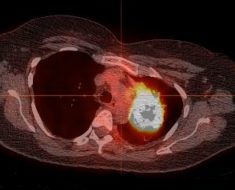Focal segmental glomerular sclerosis (FSGS), first described in the late 1950s, is one of the most common causes of primary glomerular diseases in the adult population. Moreover, the incidence of FSGS has been increasing in the past few years. FSGS may arise due to a systemic condition or as an idiopathic renal disease where a cause cannot be identified.
There is scarring in regions scattered throughout the kidney, which is typically limited to a defined part of the glomerulus, a network of capillaries at the beginning of the nephron. The nephron is the basic functional and structural unit of the kidney.
Nephrotic syndrome or asymptomatic proteinuria are features of FSGS, which is a progressive form of renal disease. It accounts for up to 2.3% of end-stage renal disease (ESRD) cases. In order to diagnose FSGS, biopsies are done to confirm the presence of scarring in an affected glomerulus. This however is quite difficult to confirm, since affected glomeruli tend to be scattered, especially during the earlier stages of the disease. Hence, repeat biopsies may be necessary to confirm the diagnosis.
Treatment also may prove to be a challenge, especially cases that are of an unknown origin. Therapies include steroids and a range of other immunosuppressive drugs, but many patients progress to complete renal failure over a span of 5 to 20 years. Those with aggressive forms of the disease may develop total renal failure in just 3 years.
Signs and Symptoms
Edema, the accumulation of fluid in tissues and cavities, is the most common complaint in patients with FSGS. This fluid accumulation is seen especially in the legs, where patients note that their shoes no longer seem to fit. However, most patients with FSGS have no symptoms at all. Another common finding is hypertension or high blood pressure, which is very hard to manage in FSGS.
Creatinine, produced by muscle breakdown and filtered by the kidneys, accumulates in blood when the filtering mechanism of the kidney is disrupted by FSGS. Moreover, damage to the filtering system allows for proteins to leak into the urine, giving it a foamy appearance.
Epidemiology
FSGS has a high prevalence among African Americans. It is 2 to 3 times more frequent in this population in comparison to Caucasians. FSGS is the lesion found in 35% of the cases in adults who present with nephrotic syndrome. This number may approach 50% in those who are of African American descent. African Americans with FSGS tend to have a greater likelihood of a family member who has or had ESRD. This indicates that there may be a possible genetic predisposition.
While no particular age groups are exempted from developing FSGS, its incidence among 18 to 45 year olds is typically high. In addition to this, men are 3 to 4 times more likely than women to have FSGS. Approximately 1 in every 10 children who present with nephrotic syndrome will be found to have FSGS when a renal biopsy is done. This incidence is higher in children who are resistant to immunosuppressive therapy.
Sources
- www.niddk.nih.gov/…/facts.aspx
- unckidneycenter.org/…/focal-segmental-glomerulosclerosis-fsgs
- http://www.ncbi.nlm.nih.gov/pmc/articles/PMC4894996/
Further Reading
- All Focal Segmental Glomerular Sclerosis Content
- Focal Segmental Glomerular Sclerosis Diagnosis and Treatment
Last Updated: Feb 26, 2019

Written by
Dr. Damien Jonas Wilson
Dr. Damien Jonas Wilson is a medical doctor from St. Martin in the Carribean. He was awarded his Medical Degree (MD) from the University of Zagreb Teaching Hospital. His training in general medicine and surgery compliments his degree in biomolecular engineering (BASc.Eng.) from Utrecht, the Netherlands. During this degree, he completed a dissertation in the field of oncology at the Harvard Medical School/ Massachusetts General Hospital. Dr. Wilson currently works in the UK as a medical practitioner.
Source: Read Full Article





